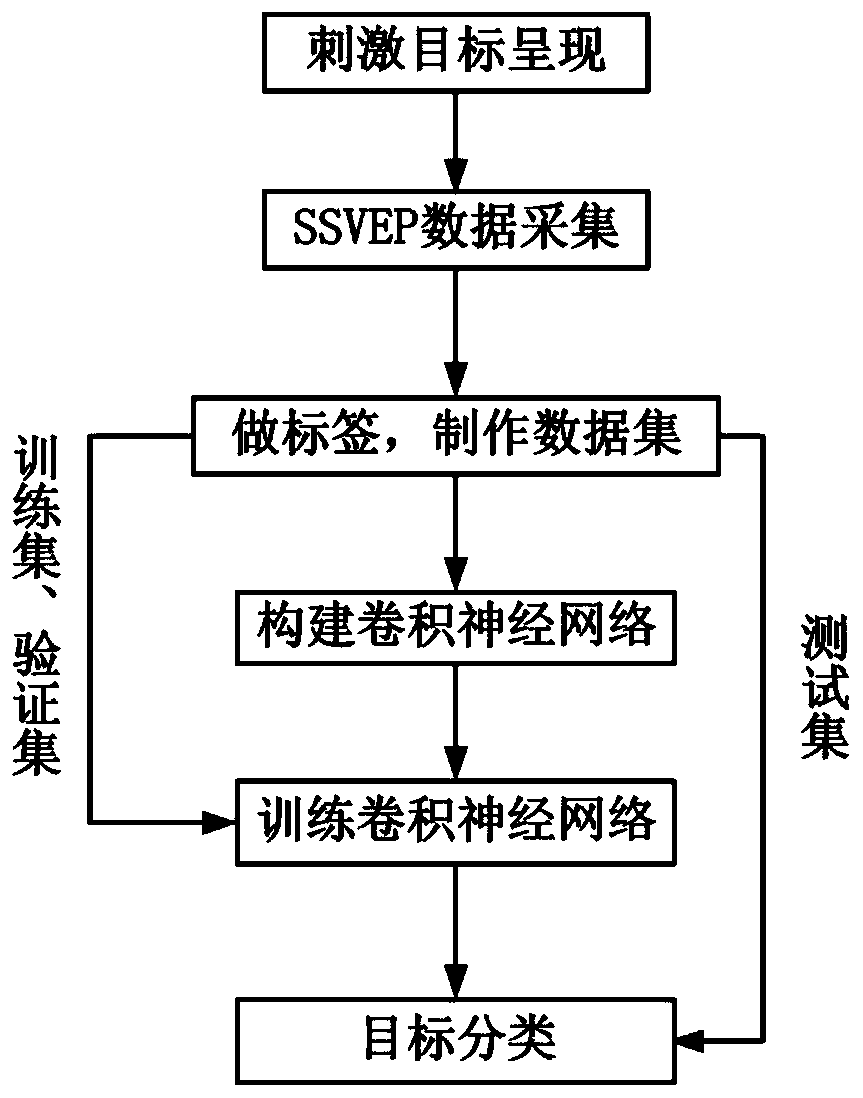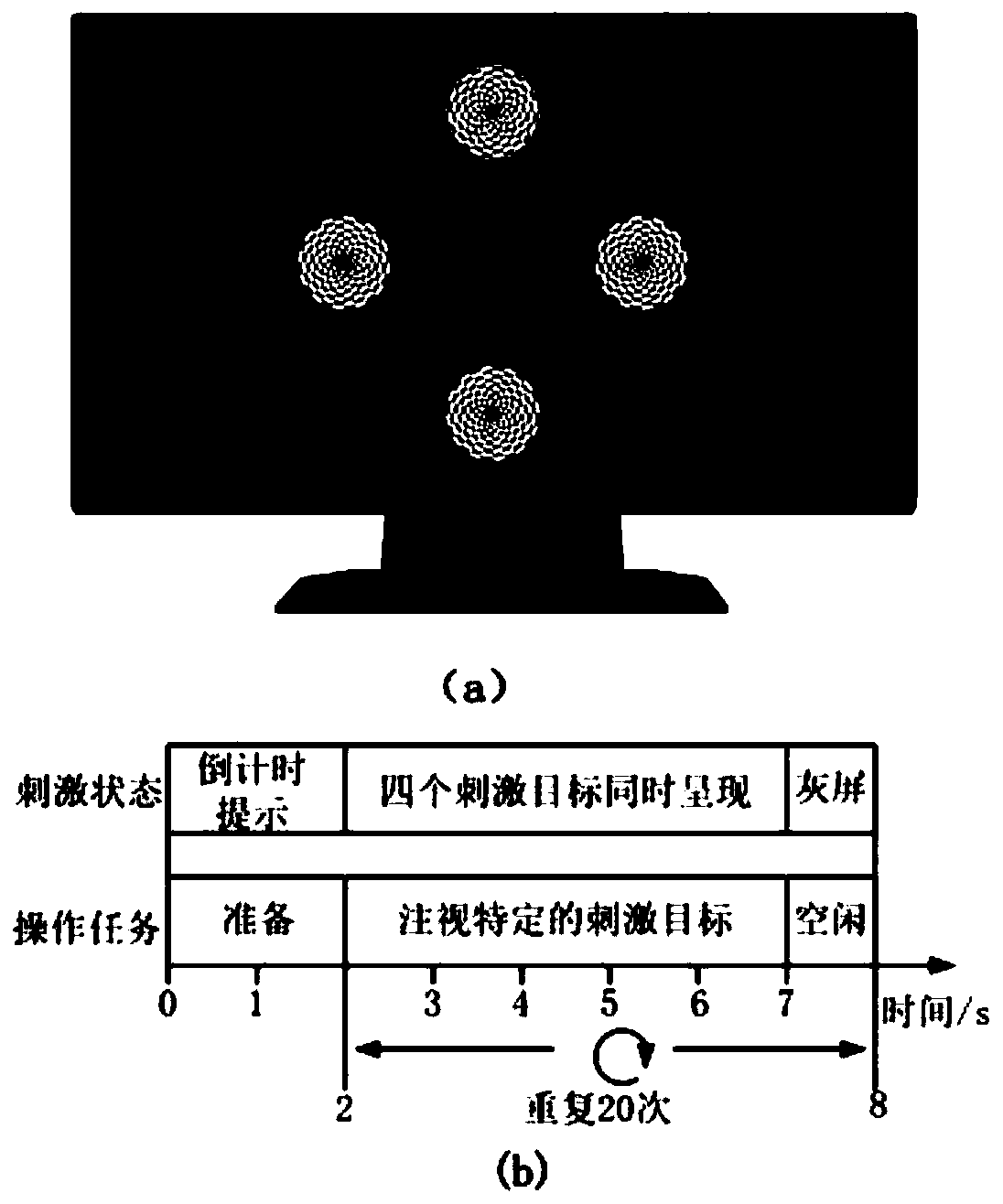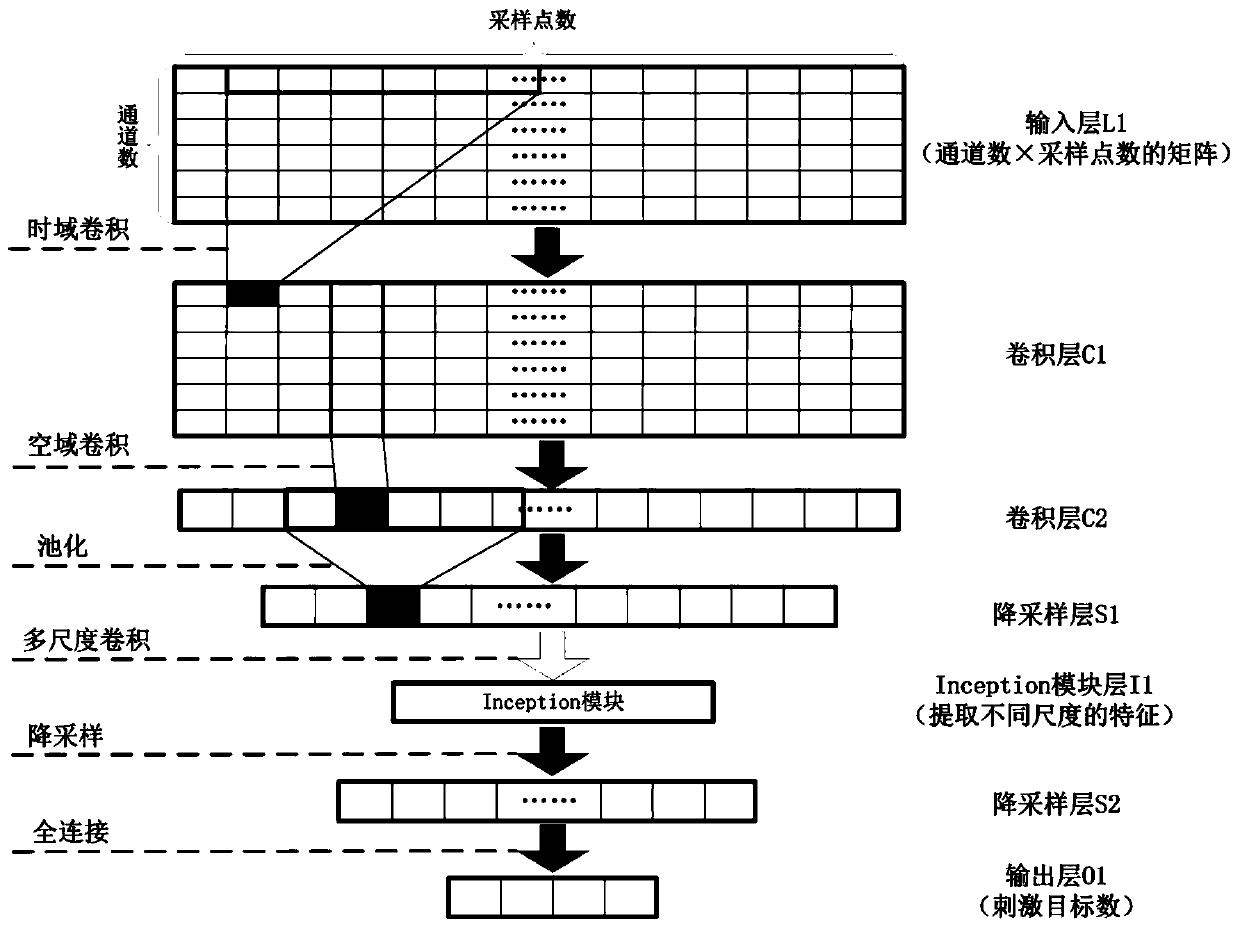Steady-state visual evoked potential signal classification method based on convolutional neural network
A technology of steady-state visual induction and convolutional neural network, applied in biological neural network models, neural architecture, medical science, etc., can solve problems such as limiting SSVEP-BCI engineering applications, not taking into account individual differences, and low recognition efficiency , to achieve the effect of improving application performance, adapting to individual differences, and accurately identifying
- Summary
- Abstract
- Description
- Claims
- Application Information
AI Technical Summary
Problems solved by technology
Method used
Image
Examples
Embodiment Construction
[0031] The present invention will be further described in detail below in conjunction with the accompanying drawings and embodiments.
[0032] Such as figure 1 As shown, a steady-state visual evoked potential signal classification method based on convolutional neural network, including the following steps:
[0033] Step 1, such as figure 2 As shown in (a), when four stimulation targets moving at different cycle frequencies are presented on the monitor at the same time, the frequencies of the four stimulation targets are left 6 Hz, right 7 Hz, upper 8 Hz, and lower 9 Hz, and the design and presentation of the stimulation targets are uniform Implemented by the Psychtoolbox toolbox based on MATLAB;
[0034] Step 2, the user chooses to focus on a specific target, and at the same time uses the EEG signal acquisition instrument to collect the SSVEP signal of the user at this time. According to the international standard 10 / 20 system method, the SSVEP signal collects visual brain ...
PUM
 Login to View More
Login to View More Abstract
Description
Claims
Application Information
 Login to View More
Login to View More - R&D
- Intellectual Property
- Life Sciences
- Materials
- Tech Scout
- Unparalleled Data Quality
- Higher Quality Content
- 60% Fewer Hallucinations
Browse by: Latest US Patents, China's latest patents, Technical Efficacy Thesaurus, Application Domain, Technology Topic, Popular Technical Reports.
© 2025 PatSnap. All rights reserved.Legal|Privacy policy|Modern Slavery Act Transparency Statement|Sitemap|About US| Contact US: help@patsnap.com



